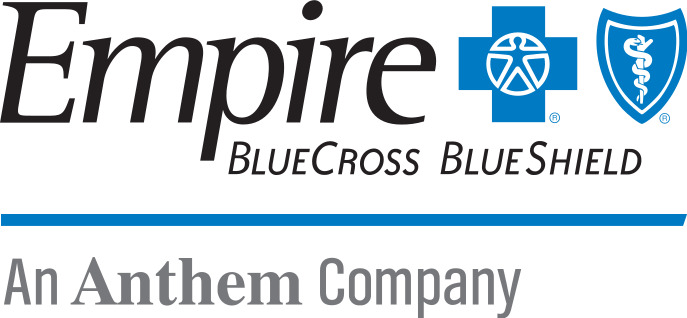Medicare dual eligibility refers to individuals who qualify for both Medicare and Medicaid, two distinct government-sponsored healthcare programs in the United States. This dual eligibility often arises in the context of individuals who are elderly or disabled and meet the criteria for both programs.
Medicare /Medicaid Dual Eligibility:
- Individuals who meet the eligibility criteria for both Medicare and Medicaid are referred to as “dual-eligible” or “Medicare-Medicaid dual enrollees.”
- Dual eligibles often have complex healthcare needs and may require a combination of services covered by both programs to address their medical, long-term care, and prescription drug needs.
Coordination of Benefits:
- The coordination of benefits between Medicare and Medicaid aims to ensure that dual-eligible individuals receive comprehensive healthcare coverage without gaps.
- Medicaid may help cover some of the costs that Medicare does not, such as premiums, deductibles, and services not covered by Medicare.
Programs of All-Inclusive Care for the Elderly (PACE):
- PACE is an example of a program designed to provide comprehensive, integrated care for dual-eligible individuals, allowing them to receive both Medicare and Medicaid benefits through a single, coordinated program.
Medicare Dual Eligible Special Enrollment Periods (SEP) and Open Enrollment Periods (OEP) play crucial roles in allowing individuals with dual eligibility for Medicare and Medicaid to make changes to their healthcare coverage. These periods provide opportunities for beneficiaries to enroll in or make changes to their plans outside of the regular enrollment periods.
- Medicare Advantage Dual Eligible Special Needs Plans (D-SNPs):
- Dual Special Needs Plans (D-SNPs) are Medicare Advantage plans specifically designed for individuals who are eligible for both Medicare and Medicaid.
- Dual-eligible individuals have the option to enroll in or switch between D-SNPs during certain enrollment periods.
- Medicare Dual Eligible Special Enrollment Periods:
- Dual-eligible individuals have special enrollment periods that allow them to make changes to their Medicare coverage at certain times during the year.
- Special Enrollment Periods can be triggered by life events, such as moving to a new location, losing Medicaid eligibility, or qualifying for Extra Help (Low-Income Subsidy for prescription drugs).
- During these special enrollment periods, individuals can join, switch, or drop Medicare Advantage plans or Medicare Prescription Drug Plans.
- Medicare Annual Enrollment Period (AEP):
- The Annual Enrollment Period, also known as the Fall Open Enrollment Period, occurs each year from October 15 to December 7.
- Dual-eligible individuals can make various changes during the AEP, including switching from Original Medicare to a Medicare Advantage plan, switching between different Medicare Advantage plans, or joining, dropping, or changing prescription drug plans.
- Medicare Advantage Open Enrollment Period (MA OEP):
- The Medicare Advantage Open Enrollment Period takes place annually from January 1 to March 31.
- During this period, individuals enrolled in a Medicare Advantage plan can make a one-time change, such as switching to a different Medicare Advantage plan or returning to Original Medicare with or without a standalone prescription drug plan.
- Continuous Special Enrollment Period for Dual Eligibles:
- Some dual-eligible individuals may qualify for a Continuous Special Enrollment Period (C-SNP) that allows them to enroll or switch between D-SNPs at any time throughout the year.
Dual-eligible individuals need to be aware of these enrollment periods and take advantage of them to ensure their healthcare coverage meets their evolving needs. Additionally, the rules and options may vary, so beneficiaries should check with Medicare or their State Medicaid office for specific details and assistance with enrollment decisions.
In summary, being dual-eligible for Medicare and Medicaid means that individuals can access a broader range of healthcare services, with the two programs working together to provide comprehensive coverage. The specific details of coverage and coordination can vary by state.
For assistance selecting the right plan please call me at 877-565-4728 or use this Medicare Plan Search Tool to find plans available in your area.
How to join & when to enroll.
Enrolling in a Medicare Dual Eligible Plan involves understanding the available options, meeting eligibility criteria, and navigating the enrollment processes. Here are the key steps to enroll in a Medicare Dual Eligible Plan:
- Eligibility Verification:
- Confirm that you meet the eligibility criteria for both Medicare and Medicaid. Dual eligibility is typically based on age (65 or older) or disability for Medicare and low income for Medicaid.
- Reviewing Plan Options:
- Understand the available plan options, especially Medicare Dual Special Needs Plans (D-SNPs). D-SNPs are Medicare Advantage plans specifically designed for dual-eligible individuals, offering coordinated healthcare coverage.
- Contacting Medicare and Medicaid:
- Reach out to both Medicare and your state’s Medicaid office to gather information about available plans, coverage options, and enrollment procedures.
- Medicare Initial Enrollment Period (IEP):
- If you’re new to Medicare, you may enroll during your Initial Enrollment Period, which usually begins three months before your 65th birthday and extends for seven months (three months before, the month of, and three months after your birthday month).
- Medicare Annual Enrollment Period (AEP):
- During the Annual Enrollment Period (October 15 to December 7), you can make changes to your Medicare coverage, including enrolling in a D-SNP, switching plans, or returning to Original Medicare.
- Continuous Special Enrollment Period (C-SNP):
- Some dual-eligible individuals qualify for a Continuous Special Enrollment Period, allowing them to enroll or switch between D-SNPs at any time throughout the year.
- Contacting Plan Providers:
- Reach out to the specific Medicare Advantage plan or D-SNP provider you are interested in. They can provide details about their plan options, coverage, and the enrollment process.
- Enrollment Methods:
- Enrollment can often be done through various methods, including online enrollment on the Medicare website, by phone, or by completing a paper application. The specific methods may vary by plan.
- Providing Necessary Information:
- When enrolling, be prepared to provide information such as your Medicare number, Medicaid information, personal details, and any other required documentation.
- Seeking Assistance:
- If you find the enrollment process complex or have questions, consider seeking assistance from Medicare counselors, State Health Insurance Assistance Programs (SHIP), or other relevant resources.
It’s essential to carefully review the details of the plan you are considering, including coverage, costs, and provider networks. Keep in mind that dual eligible individuals have special enrollment periods that provide flexibility in making changes to their coverage throughout the year.
Insurance Office Phone
Insurance Service Areas
Florida / New York / New Jersey / Virginia / Pennsylvania / Connecticut / Michigan / Minnesota / Ohio / Texas / Delaware / North Carolina / South Carolina/ California / Colorado / Washington / Tennessee / Arkansas / Maryland
Contact Dan M. Wahba, CFP®












